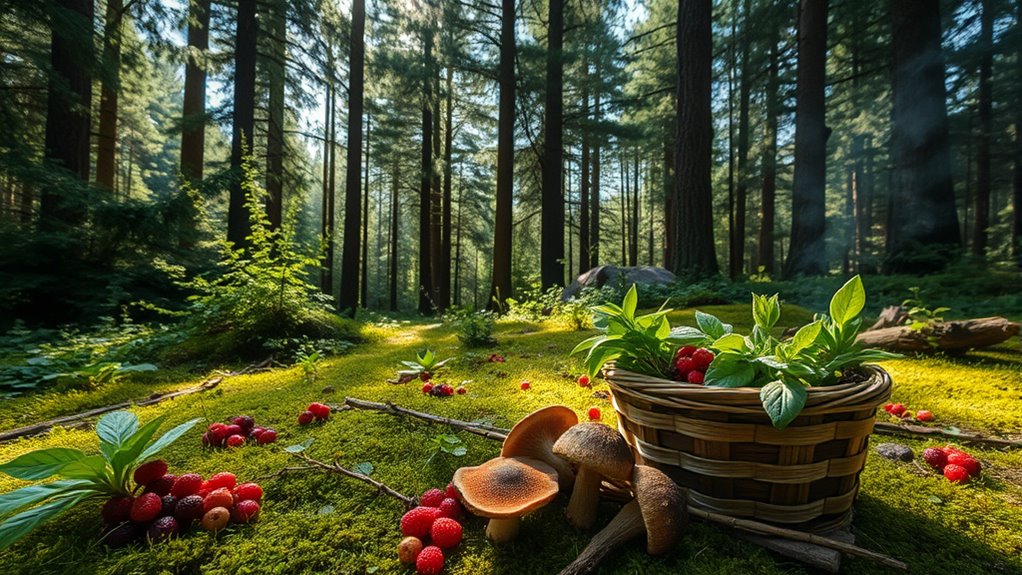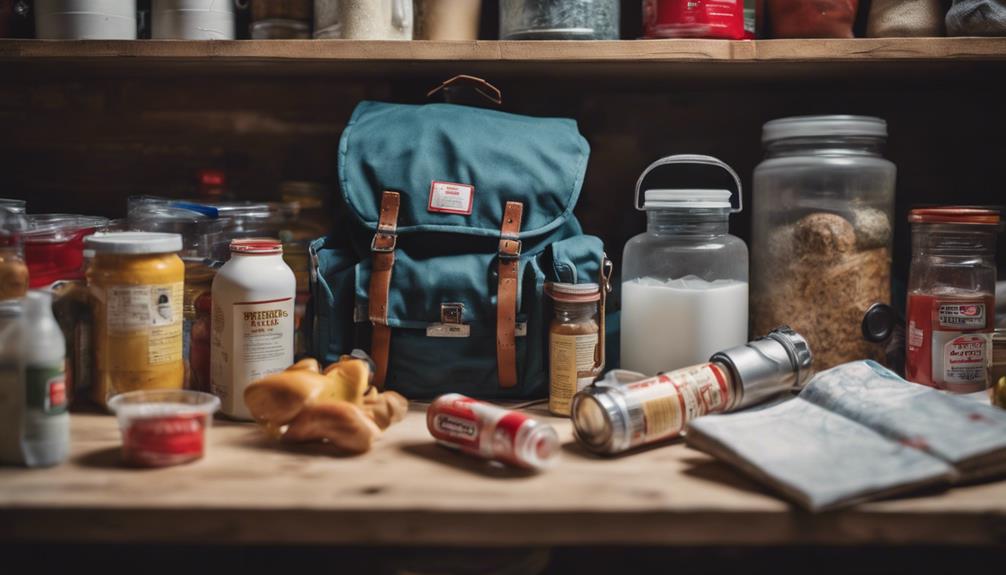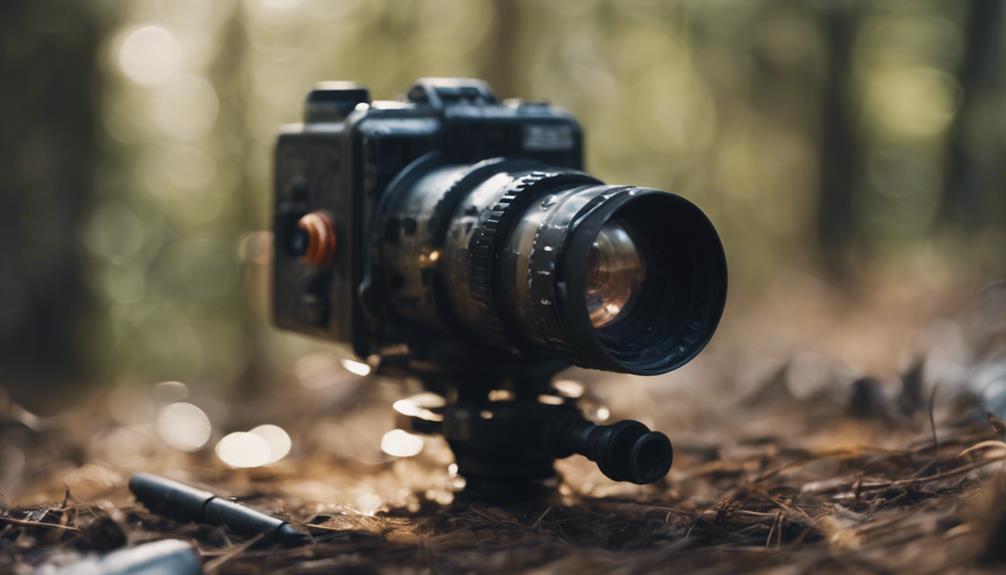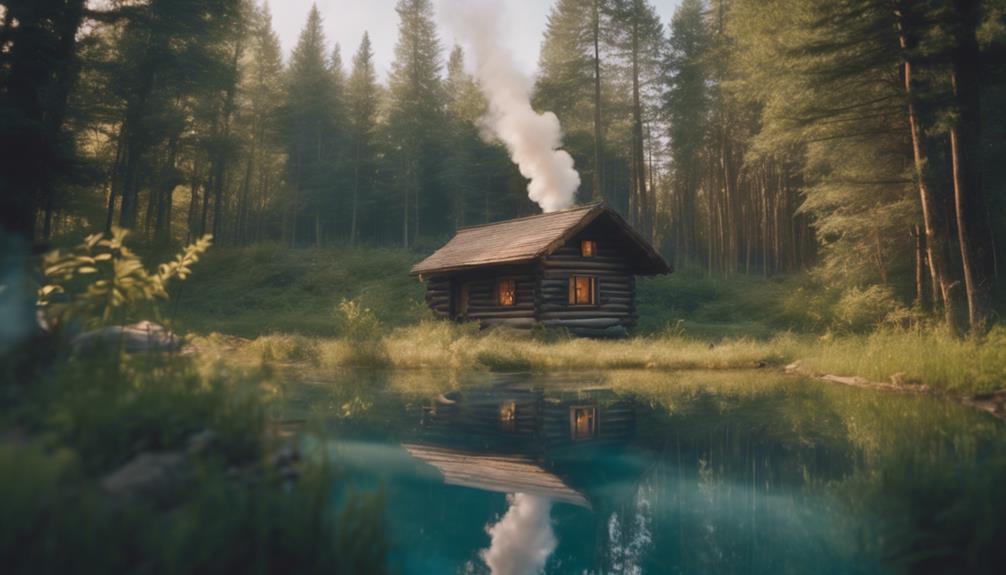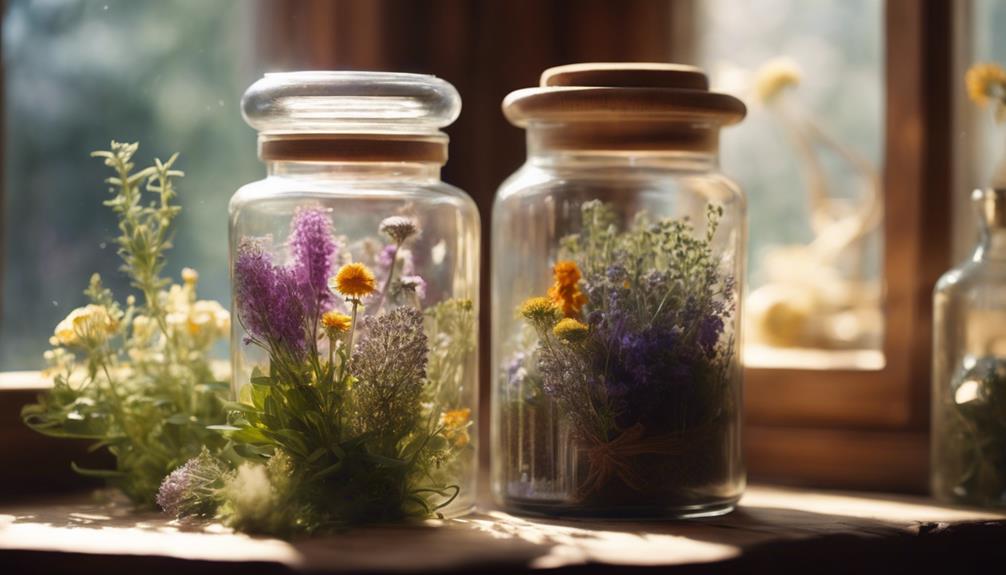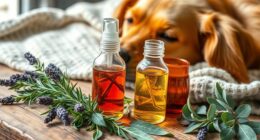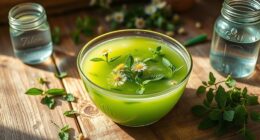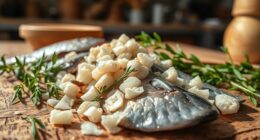To craft a 72-hour forest menu, focus on safe, calorie-dense foraging like berries, nuts, edible greens, and roots. Prioritize known plants such as blackberries, lamb’s quarters, acorns, and wild carrots, ensuring proper identification and preparation. Use tools to harvest and process these foods effectively. Building your confidence with familiar plants helps sustain energy over three days. Keep exploring to discover more tips on safe foraging essentials that can keep you nourished off-grid.
Key Takeaways
- Focus on easily identifiable, calorie-dense plants like berries, nuts, and roots to maximize energy intake.
- Prioritize safe, well-known edible plants such as blackberries, acorns, and wild carrots to avoid poisoning risks.
- Use tools to efficiently harvest and process greens, nuts, and roots, ensuring they are safe and nutritious.
- Incorporate cooked greens like nettles and properly prepared nuts to enhance digestibility and energy absorption.
- Start with familiar plants to build confidence and ensure a reliable, sustainable 3-day foraging plan.
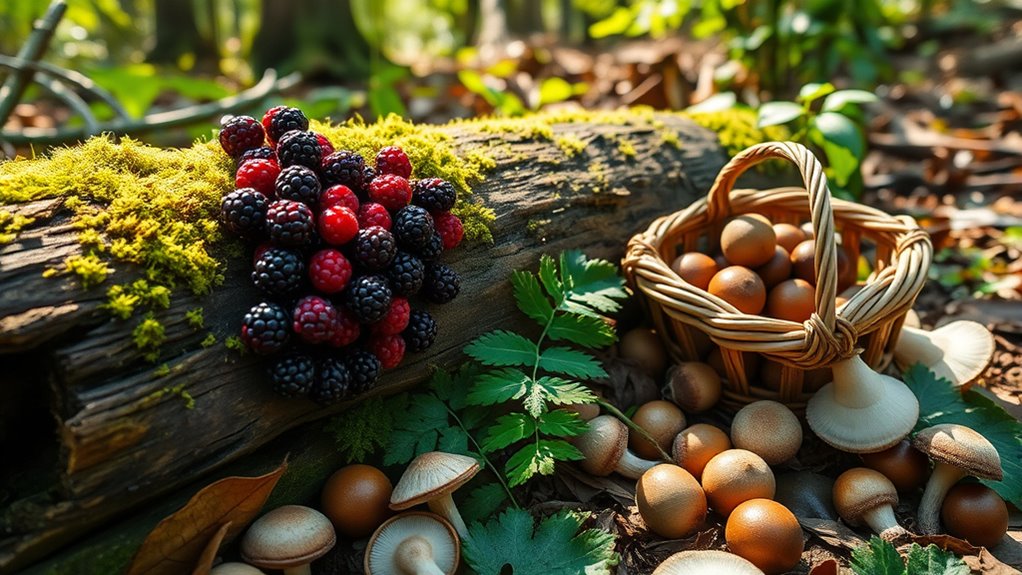
Spending 72 hours in the forest requires careful planning to guarantee you stay energized and comfortable. One of the most important aspects is knowing how to find enough calories to sustain yourself, and that means understanding which edible plants are safe to eat. When foraging for edible plants, your top priority should be foraging safety. Many wild plants look similar, and some can be toxic or cause allergic reactions if ingested. Before you venture out, research local edible plants thoroughly and carry a reliable guide or app. Stick to well-known, safe options like wild berries, edible greens, nuts, and roots, but always double-check identification. Never consume a plant unless you’re 100% certain it’s safe.
In your foraging efforts, focus on easy-to-identify, calorie-dense plants. For instance, wild berries like blackberries or raspberries can provide quick energy, but be cautious about mistaken identity with toxic lookalikes. Edible greens like lamb’s quarters or nettles offer essential nutrients and can be cooked to reduce stinging hairs or bitterness. Nuts such as acorns or hickory nuts are excellent sources of fats and calories, but remember to process them properly to remove tannins or bitterness. Roots like wild carrots or burdock can also be nutritious, but dig carefully and ensure you’re not confusing them with toxic plants. Incorporating native edible plants into your diet can help you better understand the local ecosystem and improve your foraging success.
To maximize safety, start your foraging with familiar plants you’ve practiced identifying beforehand. Avoid taking risks with unfamiliar flora, and always wash your finds thoroughly before consumption. Carry a small knife or foraging tool to help with harvesting and processing plants efficiently. If you’re unsure about a plant, it’s better to leave it alone than risk poisoning yourself. Incorporate these safe, calorie-rich plants into your daily foraging routine to build up your energy reserves.
Frequently Asked Questions
What Are the Most Common Edible Plants in Different Forest Regions?
You’ll find common edible plants vary by region, but edible mushroom varieties like chanterelles and morels are popular in many forests. For berry picking tips, look for bright, firm berries like blackberries or blueberries, and avoid any that look moldy or dull. Know your plants well to stay safe, and always double-check identification before harvesting. This way, you can confidently forage and enjoy fresh, wild foods during your adventure.
How Can I Identify Safe Versus Poisonous Forest Foods?
When it comes to plant identification, you need to be cautious about poisonous lookalikes. Always use a reliable field guide and study key features like leaf shape, color, and smell. Avoid plants with milky sap or berries that resemble edible ones. Test new foods cautiously—try a small amount first. If unsure, don’t eat it. Staying vigilant helps you distinguish safe foods from poisonous lookalikes in the forest.
What Tools Are Essential for Foraging During a 72-Hour Survival?
In the symphony of survival, your tools are the notes that keep you alive. You’ll need essential foraging gear like a sturdy survival knife, which doubles as a cutting tool and defense. A field guide helps identify edible plants, while gloves protect your hands. A small basket or bag carries your finds. Together, these tools guarantee you can gather food efficiently and safely during your 72-hour off-grid adventure.
How Do I Balance Macronutrients With Limited Forest Resources?
To balance macronutrients with limited forest resources, focus on understanding nutrient ratios and calorie density. Prioritize high-calorie foods like nuts, seeds, and berries for energy, while incorporating edible plants for carbs and proteins. Mix and match what you find to maintain a balanced intake, ensuring you get enough fats, carbs, and proteins. Keep track of your intake to prevent deficiencies and sustain your energy during your survival period.
What Are Quick Ways to Prepare and Preserve Foraged Foods?
When looking for quick preparation methods and preservation techniques, focus on simple, effective methods like drying, smoking, and fermenting your foraged foods. You can dry berries and herbs in the sun or a low-heat oven, smoke meats or fish for longer storage, and ferment vegetables for probiotics. These techniques require minimal equipment, save space, and help extend your food’s shelf life, ensuring you have nourishment during your off-grid adventure.
Conclusion
By following this 72-hour forest menu, you’re fundamentally becoming a walking, talking survival machine, capable of living off the land with ease. With a keen eye and a little resourcefulness, you’ll gather enough calories to sustain yourself for days—more than most could dream of in a lifetime. Remember, the forest’s bounty is like an endless treasure chest just waiting to be opened. Trust your skills, stay resourceful, and you’ll outlast even the toughest storms.

